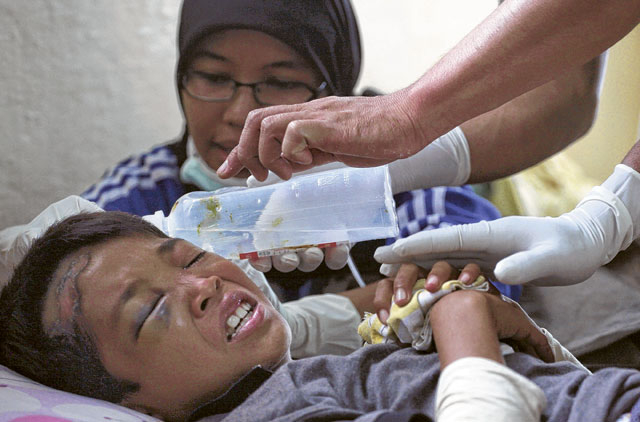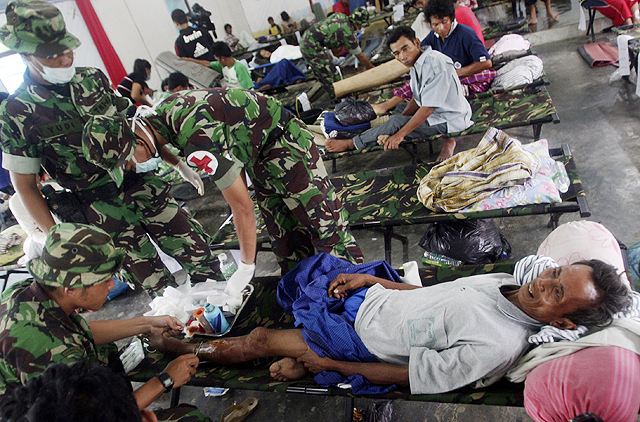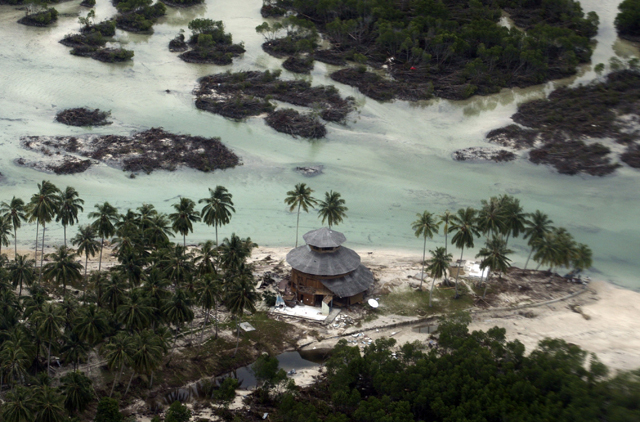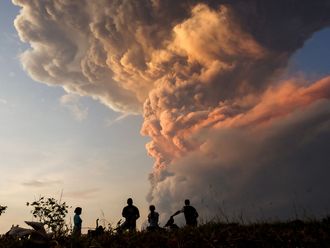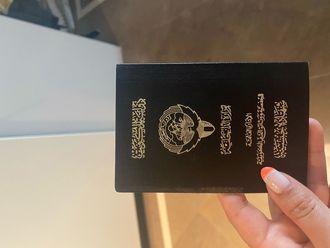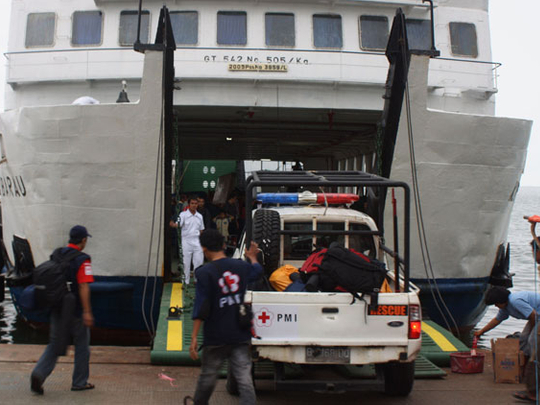
Mentawai: Indonesia's National Disaster Management Agency said on Sunday that the discovery of more bodies has raised the known death toll from the tsunami which hit remote islands a week ago has risen to 449.
However, the number of people still reported missing in the deadly wave's destructive aftermath has dropped as more people who had fled to high ground away from the coast line begin to return home.
The agency said the number now registered as still missing is 96.
Meanwhile, at Indonesia's volcano disaster site, thousands of villagers are risking their lives by returning to their homes.
They want to check farms despite a fiery glow still being emitted by Mount Merapi which has killed 36 people in the past week with violent eruptions spewing out hot ash and dust.
Scores of people found alive
On Saturday, scores of people feared dead in Indonesia's tsunami disaster zone were found alive as rescue workers spread out to remote island communities five days after the killer wave.
The discovery came as Indonesia struggled with disaster on two fronts following another powerful eruption of the archipelago's most active volcano, which spread chaos and ash over a vast area of central Java.
On the tsunami-hit Mentawai island chain off the coast of Sumatra, rescue workers battling rough seas and monsoon rain found 135 people hiding on high ground, too scared of another wave to return to their shattered villages.
"We're so grateful that we've found many of the missing people - we'd been working very hard to find them," disaster management official Joskamatir said.
Officials had held little hope of finding many of the missing after flights over the area earlier in the week revealed dozens of unclaimed bodies strewn across beaches and wedged in rubble.
Many of the dead were also believed to have been sucked out to sea as the killer wave receded.
The number of missing was almost halved from 298 to 163 following Saturday's discovery, while the death count remained at 413, according to an official tally.
Rescue workers were reaching some of the isolated coastal villages crushed by the three-metre wall of water which was triggered on Monday by a 7.7-magnitude earthquake, but monsoon weather was slowing the relief effort.
"Before help came I survived by eating whatever we could find, such as taro," said Theopilus, 42, a farmer on the worst-hit island of South Pagai.
"We're in dire need of more food, tents and blankets. I feel really cold at night as it rains all the time."
In central Java, 1,300 kilometres to the southeast, terrified residents fled in panic when Mount Merapi erupted again just after midnight, fearing a repeat of explosions on Tuesday that claimed at least 36 lives.
No one was killed in the latest eruption, but hospital staff reported that two people had died in the chaotic rush to escape.
"I was sleeping on the veranda when loud booms like thunder woke me up," local resident Kris Budianto, 51, told AFP. He suffered a broken arm and facial wounds when he crashed his motorbike in the melee.
Volcanic ash rained down on the Central Java provincial capital of Yogyakarta 26 kilometres away from the crater, shutting the airport for over an hour.
Government volcanologist Subandrio said more eruptions were likely and warned about 50,000 people who have been evacuated from the danger zone not to tempt fate by going home too soon.
"We will even have to evaluate whether we need to widen the exclusion zone because we should not downplay the threat - Mount Merapi is extremely dangerous," he said.
Many displaced people return to the slopes of 2,914-metre Merapi, a sacred landmark in Javanese tradition whose name means "Mountain of Fire", to tend to their precious livestock during the day.
On North Pagai, dazed and hungry survivors of Monday night's tsunami were still roaming between devastated villages looking for food and lost loved ones.
A baby was born in a crammed medical clinic as a man died of his wounds just a few beds away.
Another ship bearing badly need supplies such as tents, medicine and food arrived at Sikakap on the protected side of North Pagai island, while helicopters dropped aid packages to cut-off villages.
Joskamatir said only five per cent of the aid piling up at Sikakap had been delivered to those in need, citing bad weather and the "limited availability of transportation" such as boats and helicopters.
"There are three helicopters here already but we still need more speedboats. We need about 50 speedboats," he said.
Australia and the United States have pledged aid worth a total of $3 million while the European Commission released 1.5 million euros ($2 million) for victims of both disasters.
Indonesia straddles a region known as the "Pacific Ring of Fire", with scores of active volcanoes and major tectonic fault lines. Almost 170,000 Indonesians were killed in the 2004 Asian tsunami.
President Susilo Bambang Yudhoyono visited tsunami survivors on Thursday and said the "only long-term solution" was for people to move away from the most vulnerable coastal areas.
Mentawai fisherman Hari, 24, agreed.
"I plan to leave my village. I don't want to live here anymore. I'm traumatised," he said.


